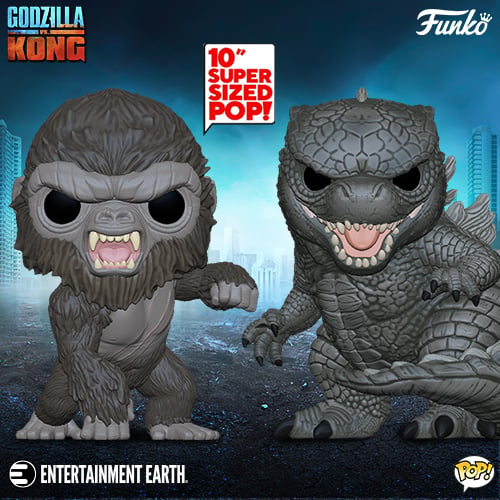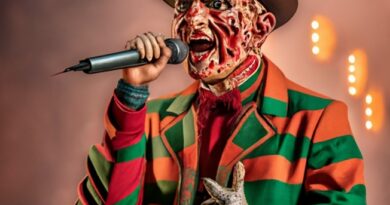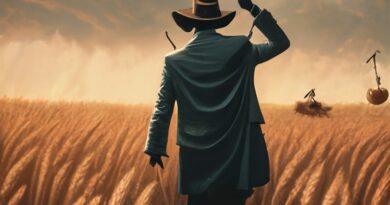Halloween Theme Song: Fear Got Its Own Tone
Undoubtedly, the horror franchise “Halloween,” starring one guy named Michael Myers, is one of the most influential and essential in the history of horror cinema. The 1978 masterpiece, in which Michael’s pursuit of a woman named Laurie Strode began, is one of the founding fathers of slashers and a masterpiece. Then came many sequels, some successful and others much less so. As of 2023, there are 12 (!) sequels, including the latest “Halloween Ends,” which supposedly concludes the trilogy (no spoilers, of course). As you can expect from a successful horror series, we may continue to see remakes, reboots, prequels, sequels, and other films.
We saw quite a few mediocre and controversial versions, such as those of Rob Zombie or the recent films, which presented a meeting between three generations and minor characters from the first films returning to action. But in all these movies, between the slew of murders, the old heroes, and the new final girls (hello then, Andy Matichak), there is one thing that I personally look forward to in each movie. We are talking about the famous Halloween theme song, which instantly puts us in a creepy atmosphere. Damn, I ever downloaded once Halloween theme song ringtone for my phone!
Here’s everything you need to know about one of the soundtracks that shaped the world of horror, no less than Freddy Krueger song, The Exorcist theme. and more. So please turn off the lights, turn on the speakers, turn on the music and start reading.
Halloween Theme Song: A Complex Simplicity
The theme song of “Halloween” is the central theme of the iconic Halloween horror movie franchise, which began in 1978 and spawned countless sequels, video games, comic series, costumes, collectibles (such as Michel Myers Funko Pop figure we wrote about not long ago), A board game, inflatables for decoration and what not.
Halloween theme song is widely recognized as one of the most influential and memorable pieces of horror music ever and has been used in various texts and parodies. You’ll find it at the top of almost every list of famous horror soundtracks, and it’s not hard to see why.
The theme song creates a sense of dread, tension, and anticipation with its simple but effective piano melody, accompanied by a bass synth line and a 5/4 time signature that gives it an irregular and disturbing rhythm. As someone whose musical sense is about as developed as that of the worst, least self-aware spoofs in the annoying “I Can See You Voice” series, and who sounds like a zombie crow when he tries to sing, those terms don’t mean much.
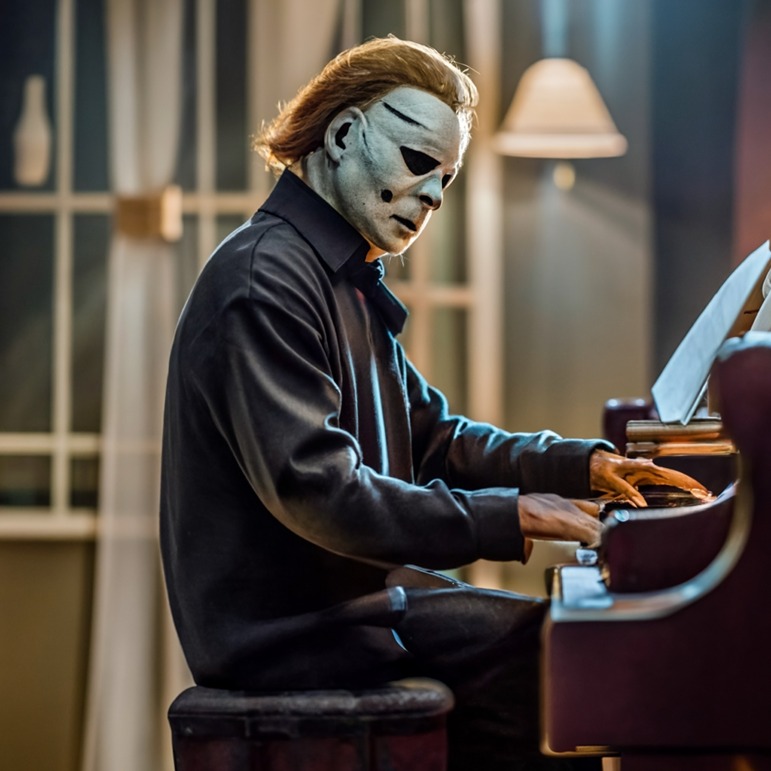
A short search on the Internet exposed me to an explanation that sounded quite reasonable by a professor named Neil Lerner, an expert on the relationship between music and culture. The main thing here is that the weight of the piece (“Metre” or “Meter”) – a term describing the organization of beats in a group with a fixed number of beats and tastes – is complex and asymmetrical. “It’s got five pulses instead of just a group of two or three,” he explains in Davidson College’s website. “That’s pretty unusual, at least for film music and for mainstream music. We’re used to hearing music that has really even, steady pulses”.
From a practical point of view, with all the complexity of the ideas – it is a pleasant thing that is quite simple to do. “It’s an economical score at a very practical level because, as far as I can tell, it’s just synthesizers,” explains Lerner. “A typical feature film would have budgeted for an entire orchestra, which is quite expensive. You’re paying individual players and recording engineers, and so forth. For Carpenter to do it all himself on the synthesizer would just be much cheaper”.
The film itself was produced with a budget of about 300,000 dollars which today sounds ridiculous. Still, even in that period, it’s far from impressive .”Halloween was written in approximately ten days by Debra Hill and myself. I screened the final cut, minus sound effects and music, for a young executive from 20th Century Fox. She wasn’t scared at all”, Carpenter wrote. “I then became determined to ‘save it with the music.’ I was the fastest and cheapest I could get.”

The Roots: From Psycho To Dad’s Drums
You may ask who wrote the Halloween theme song, and the answer may be surprising (unless you are good at trivia or actually read the credits).
The composer of the Halloween theme song is no other than John Carpenter. Carpenter is not only a director, writer, and producer of countless horror films from the 70s (such as “The Thing,” “The Fog,” “They Live,” and “Escape from New York”) but also a talented composer with a “good hearing,” as he said. Quite unusually, we got a director who co-wrote the script and the production and was also responsible for the complete soundtrack of his work.
Carpenter did not operate in a vacuum, of course. Traditional horror music is partly influenced by opera and concert halls, but Carpenter took it a few steps further. He got inspiration from the music of Bernard Herrmann, who is responsible, among other things, for the soundtrack of some of Alfred Hitchcock’s classic films, including “Psycho.” “Herman’s music is full of unprepared and unresolved dissonances,” explains Lerner. “The shower scene, for example, includes only two pitches. The second time they made the famous string sound, to get the “torn” sound. According to him, Herman acted for economic reasons like Carpenter and used only stringed instruments.
Carpenter was influenced by the decorated composer Ennio Morricone, perhaps the most famous when it comes to film music. Morricone is responsible for the enjoyment of more than 500 (!) films and TV shows, including “The Good, the Bad, and the Ugly,” “For a Fistful of Dollars,” “Cinema Paradiso,” “The Untouchables” and “The Thing.” He won the Oscar for Lifetime Achievement, and in 2015 also for the best original soundtrack (for Quentin Tarantino’s “The Hateful Eight”).
Another influence, also on the purity of the synthesizers that repeat and create a feeling that something terrible is going to happen, is the masterful soundtrack of the equally masterful “The Exorcist” by William Friedkin, or “Suspiria” by Dario Argento (which also influenced the director’s use of colors). But Carpenter also drew his inspiration from private life. He said the music was influenced by a practice his father put together for him on bongo drums sometime in 1961.
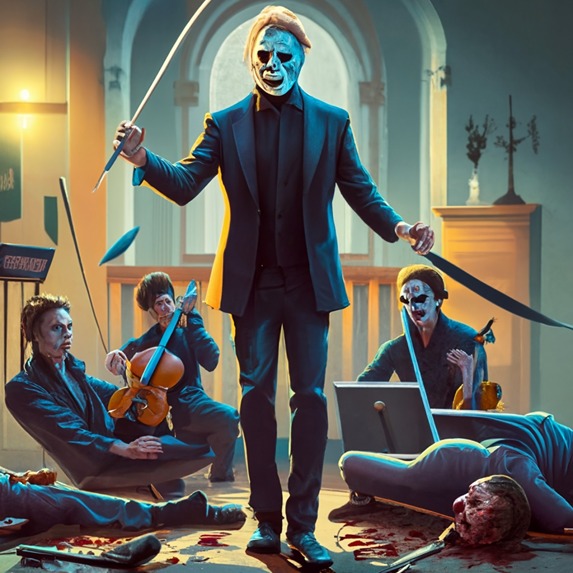
The Vision Behind Halloween Theme Song
Carpenter, who studied music as a child and was part of various musical ensembles, wanted to create a simple and minimalist theme reflecting the emotionless and relentless nature of the film’s villain, Michael Myers. That’s why the music goes on and doesn’t stop, to symbolize Michael’s unbridled energy (maybe because he just prefers to walk and conserve energy).
Carpenter used a synthesizer to create the theme song and recorded it in three days with the help of his friend Dan Wyman and recording engineer Alan Howarth. He ordered a studio in Los Angeles, and the three faced a difficult challenge. Today, as we know, the sound is edited simultaneously with the picture to match precisely. This technology was not yet alive in those days, so for the production, they used timing by a timer and matched the music to the film afterward in the film studio. Surprisingly or not so much, they managed to create a perfect coordination.
The original soundtrack was released in 1979, shortly after the film was made, by Columbia Records, now owned by Sony. In 1998, an extended version was released, to mark the 20th anniversary of the original film, which included no less than 28 pleasantries. In 2018, 40 years after Michael Myers entered our lives, Monde Records released a special 16-track LP, including two versions of that famous tune.
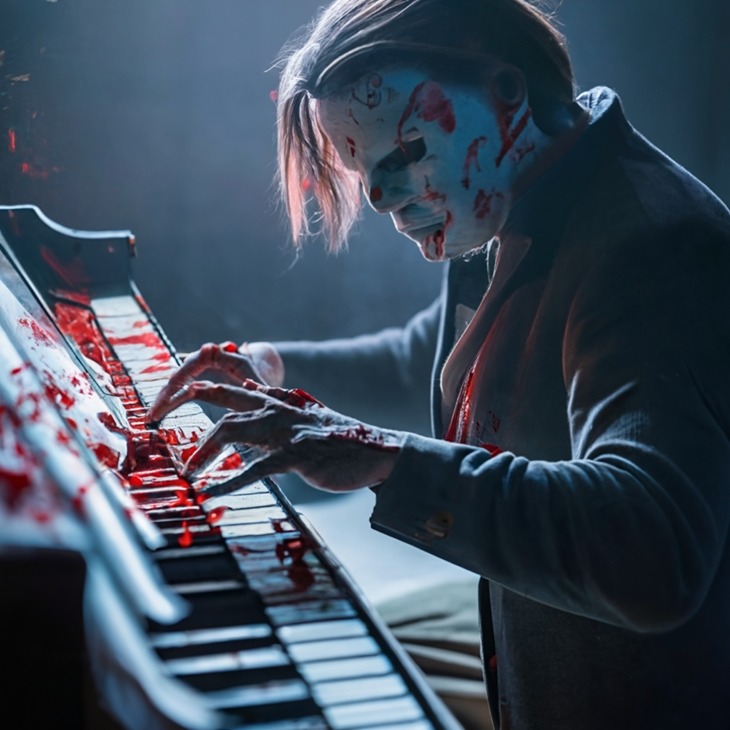
The theme song of “Halloween” influenced horror cinema and the use of sound in films as a whole. It greatly influenced the design of the synthwave genre, a micro-subgenre of electronic music that mainly includes soundtracks of horror, action, and science fiction films. The vibe here is that of the 80s, with the music itself including features that appeared in video games of that time, for example.
synthwave music is primarily instrumental, and you will find all the prominent music clichés of the 80s: analog synthesizers, electronic drums, and various sound effects from the electronic arsenal (but not only.) This music occasionally appears in our lives in recent years, for example, in the soundtrack of the hit Netflix series “Stranger Things,” which begins in Indiana in 1983.
One Theme Song, Multiple Uses
We have seen quite a few uses of the famous theme song in the various films. Traditionally, you will find it at the beginning of the film, for example, in the credits list, as it happened in quite a few films in the franchise. Carpenter made the Halloween theme song a “character” in the film, or at least a central part of the film’s plot.
You can see an excellent example of this in one of the scenes in the first movie, where Laurie Strode (Jamie Lee Curtis) is walking with her two friends after school, talking about what girls talk about. At one point, a car enters the frame. The friends think it’s one of the “hot” students, but Lori is suspicious. The famous melody begins when we see the car entering the frame and signifies to us who is inside it: Michael Myers, of course, who probably learned to drive at some point between all the murders. Our suspicions become confirmed when we see, along with Lori, that Michael is driving the car while he is looking at them and not at the road (who the hell gave this guy a license?). The pace of the music almost matches the speed of the ride. The music increases sharply when the girls shout something to Michael, and he stops with the car. Michael continues driving, exiting the frame, and the music slowly fades.
Another example is from the last movie, “Halloween Ends,” which featured the character of the babysitter Corey Cunningham. In the film’s first scene, he is babysitting a boy named Jeremy. The same Jeremy decides to strangle him and lock him in the attic. Just as Jeremy’s parents return from the outing, they hear strange noises that quickly turn into the horrific sound of their child falling to his death. Cory tries to present it as an accident, but later in the film – spoiler alert – it turns out that he is not exactly sane, but steps into Michael Myers’ shoes. The famous music appears during the pumpkin-decorated opening credits, but after the opening scene, we realize that this connection can teach us the truth behind this guy.
Halloween Theme Song, The Metal Version
The Halloween theme song has different versions, depending on the film or media used. For example, the 1981 sequel Halloween II featured a more electronic and distorted version of the theme song, while the 1998 sequel Halloween H20: 20 Years Later used an orchestral version of the theme song by composer John Ottman.
Rob Zombie’s remake of the 2007 “Halloween” theme song took it in a more metallic direction, which is not surprising given the fact that Zombie himself was the vocalist and the leading man behind the heavy metal band “White Zombie,” which operated between 1985-1998. John Carpenter, along with his son Cody Carpenter and godson Daniel Davis, created an updated version of the theme song for the 2018 sequel Halloween. This version added new elements such as electric guitar, drums, and sound effects to give it a more modern and dynamic feel.
How To Play The Halloween Theme Song On Piano?
There are tons of cover versions of this music in Youtube. Most of them are Halloween theme song piano versions. If you are a better musician than me and want to learn how to play the Halloween theme song on piano, you can check this video out:
Unsurprisingly, you can make the theme using other instruments. Here is, for example, Halloween theme song guitar tab:
Whether we see more films in the famous franchise or not, there is no doubt that the character of Michael Myers will stay with us forever – and so will the ever-so-favorite theme song. Because even if Michael Myers can be killed, you just can’t stop the music.



